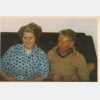| Profile | Posted by | Options | Post Date |

|
Rita
|
Report
|
5 Jul 2009 19:48 |
|
Lesley
Thank you for that it was very interesting I had never heard about that it just goes to show you what our London History is all about when you get items like that told.
Thank you
Rita
|

|
LesleyB
|
Report
|
5 Jul 2009 19:40 |
|
what a fascinating thread about my home town - and I am ashamed to say I was ignorant to many of the things posted here. Thought I had better find some to put on ....
Aldgate Pump
The Aldgate Pump has a long history, possibly going back to the 16th Century, when a pump is said to have been erected on the site of the old Aldgate Well. A stone pump was installed in the late 18th Century and modified in about 1870-71, when it was also moved slightly from its original position. It's a Grade II listed building.
A picture exists of it in use in 1880 complete with a large gas lamp on top, and with a stone spout, quite different from the brass dog's head spout that's there now. This was certainly in place by 1912, as there's a postcard in existence which shows this feature, together with the caption "Over 400 years old and is still in daily use, and in hot weather a continuous stream of lads may be seen slaking their thirst".
As with many pumps in London, it has its own horror story, and it seems that several hundred people died in the Aldgate Pump Epidemic, as a result of drinking polluted water. All this had totally changed by 1920, when it is recorded that Whittard's, the tea merchants, used to "get the kettles filled at the Aldgate pump so that only the purest water was used for tea tasting".
It was still in use in 1927. At some stage after this it must have been connected to the water mains, as today there's a brass button to operate a stopcock, although the old pump handle was retained. Of course nothing works now and the stone is very weathered towards the base of the pump.
But it's more than a pump - it's a venerable London landmark. Mileages were measured from the pump, and the road to Southend - the A13 - starts from here.
Even more significant is the fact that the pump marks the official point at which the East End of London starts. It was variously said that "East of Aldgate Pump people cared for nothing but drink, vice and crime", and that "the area East of Aldgate Pump was a breeding ground for young boxers". Charles Dickens wrote in "The Uncommercial Traveller" in 1861: "My day's no-business beckoning me to the East-end of London, I had turned my face to that point of the Metropolitan compass on leaving Covent Garden ... and had got past Aldgate Pump…".
A composer of the Music Hall days, Edgar Bateman, was given the nickname "The Shakespeare of Aldgate Pump" . There was the saying "A draught on Aldgate Pump" - which meant a worthless cheque that couldn't be cashed. (Draught = a money order or a sup of liquor - geddit?).
"Aldgate Pump" is Cockney rhyming slang for being annoyed - i.e., to get the hump.
THE LAST EXECUTION IN THE TOWER OF LONDON
The last execution in the Tower of London took place on Thursday, Aug. 14, 1941, when Josef Jakobs, a German spy, was shot by an eight-man firing squad. Jakobs, a German national, was born in Luxembourg on June 30, 1898. During W.W. II, he joined the meteorological service of the German army and rose to the rank of sergeant. On a secret mission, he was parachuted into a wooded area of Stifford in Essex County, England, on the night of Jan. 31, 1941. He was spotted floating to earth by members of the local Home Guard, who rushed to his landing spot only to find him hobbling on a broken ankle. He was arrested, and taken to Brixton Prison in London, where he was interrogated by counterintelligence officers to see if he could be turned into a double agent. Since he was a dedicated Nazi, they decided no military use could be made of him. He was given a military court-martial and sentenced to death, despite the fact that he had not actually committed espionage.
The other 15 German spies executed in Great Britain during W.W. II (two of them were British subjects) were hanged in civil prisons, but Jakobs was taken to the forbidding Tower of London. There he was confined in a small cell in the Waterloo Barracks, where the crown jewels are now housed.
He refused to see a priest, even during the last moments. At 7:00 A.M., he hobbled over to the miniature rifle range then situated on the east side of the inner wall between the Broad Arrow and Constable Towers. (It has since been demolished.
Because his ankle made it difficult for him to stand up straight and steady, he was seated in an old Windsor chair and tied up. The eight-man firing squad from the Scots Guards aimed at a piece of white lint pinned over his heart. Five of the eight shots pierced the lint at precisely 7:12 A.M. Jakob's body was taken to the old mortuary situated under the north approach road to Tower Bridge. He was buried in St. Mary's Catholic Cemetery in Kensal Green in an area which has since been covered with 6 ft. of earth to make room for new graves. The death chair remains in the Tower, though it is not on public view. Jakobs's cell is now used to store film.
|

|
Rita
|
Report
|
5 Jul 2009 08:04 |
|
Thank you Maz for speaking up someone does not like London. I wonder where they live. back to History of London.
A Tree Phenomenon
Charlton Park lies high up about the river, it provides a fitting setting for the fine well preserved Jocobean Charlton House, now used by the local council as a museum. By the lawn in front of the house stands a cluster of trees which are unique in England.This Natural wonder consists of no less than nineteen horse-chestnut trees all growing from one complex of roots. Near the entrance to the park is a gazebo,attributed to Inigo Jones. this has now been turned into a public Lavatory.
Rita
|

|
Maz (the Royal One) in the East End 9256
|
Report
|
4 Jul 2009 23:47 |
|
Mac I am shocked to see you say it is £5 for a reservation at the library! here it is £1 per item and for OAP's it's half price. I think they are taking the proverbial if they charge that much!
Cassidy, how disappointing to see you posting such negative 'facts' about our city. this thread is for interesting facts about London, not for those who live/love in other places to run London down. if you want to promote another city or area (where there are probably corrupt MP's living too) then it may be an idea to start your own thread :-)
Maz. XX
|

|
Rambling
|
Report
|
4 Jul 2009 23:26 |
|
I agree Lynda, when I lived in Kent, I felt safer up in London and still when I visit I have no qualms ( beyond a sensible level ) about being out at night there. I get stopped all the time for directions lol so must look as if I 'belong' :)) It is a friendly city to me .
xx
|

|
MacTheOldGeezer
|
Report
|
4 Jul 2009 21:43 |
|
Thanks Maz,
I would love to read it again
I will try and order it from my Library, They usually charge a Fiver but it's worth it
Mac xxxxx
|

|
Maz (the Royal One) in the East End 9256
|
Report
|
4 Jul 2009 21:40 |
|
How interesting Mac :-)
just looked up the book and it is possible to buy it, but it's expensive! I reckon the library would be the best bet. I found another similar one too. here they both are ...
Subterranean City – Beneath the Streets of London by Anthony Clayton
and
London Beneath the Pavement by Michael Harrison
Maz. XX
|

|
MacTheOldGeezer
|
Report
|
4 Jul 2009 21:22 |
|
I dont think I have enough time left to me to read right through this thread
But, I would recommend a book called London beneath the Pavements
It's well out of print now I would think, but who knows, a copy might be found on e-bay maybe
It tells you about all the underground rivers etc
Westbourne River , The Fleet, Tyburn and a dozen or so others
If you have egver stood on the platform of Sloane Square underground station there is a Great Pipe crossing in the roof that Carries the Westbourne River to the Thames
All of the rivers are now totally under the streets and pavements and very few know that they exist
Mac
|

|
David
|
Report
|
4 Jul 2009 17:42 |
|
Each month London produces enough waste to fill Canary Wharf.
Each day up to 6 tons of newspapers are left on trains in the underground.
|

|
Rita
|
Report
|
4 Jul 2009 17:11 |
|
Edward Blake drown feb 5 1895 while skating on the WELSH HARP Water at Hendon in the attempt to rescure two unkown girls,
George Lee Fireman July 26th 1876 at a fire in Clerkenwell carried an unconscious girl to the fire escape falling down six times and dies of his injuries..
It is nice to see these brave people remembered in this way there are quiet a few of these pannels.
Rita
|

|
Rita
|
Report
|
4 Jul 2009 14:53 |
|
Some of the panels read as follows.
Joseph Andrew Ford . aged 30 Metropolitian Fire Brigade october 7th 1871 saved six persons from a fire in Grays Inn Road but his last heroic act he was scorched to death.
Amelia Kenny aged 19 October 18th 1871 died in tring to save her sister from their burning house in Edwards Lane Stoke Newington.
David Selves aged 12 of Woolwich September 12th 1886 supported his drowning playfellow and sank with him clasped in his arms.
These are but a few of the panels with Herotic deeds to be found on the wall.
Rita
|

|
BarneyKent
|
Report
|
4 Jul 2009 14:49 |
|
Christopher Wren's tomb in St Paul's Cathedral is marked by a plain stone plaque mounted on the wall in a quiet corner of the Crypt. There is an inscription on it, in Latin, which ends:
"LECTOR, SI MONUMENTUM REQUIRIS, CIRCUMSPICE"
Which translates as:
"Reader, if you seek his monument, look around you".
|

|
Rita
|
Report
|
4 Jul 2009 14:38 |
|
Postman's Park 100 yards from the Museum of London north of St Pauls Cathedral is Postmans Park.in 1887 a man called Geroge Fredrick Watts wrote to The Times Newspaper to put forward the idea of creating by way of marking Queen Victoria's Jubilee a park to commemorate heroic people no one came forwrd so he decided to creat something himself . He used 50ft open gallery on the back wall of a shelter/arcade in the public gardens know as postmans Park along the wall he put thirteen glazed Doulton hand-lettered tiles/tablets he then had the newspaper search for examples of Fatal bravery to create these records usually children are involved in the stories.
Rita
|

|
Rita
|
Report
|
13 May 2009 10:36 |
|
The Stock Exchange "STAG"
The term BULL and BEAR are familiar to those who study the stock markert. but STAG is less frequently encountered.
It is used to describe a person who applies for an allotment of shares prior to issue with no intnention of taking them up. but anticipating thatn they will be at a premium when quoted. desposes of them immediately and takes his profit.
The Pratice is said to have originated, at any rate on a vast scale.by George Hudson.the Railway King. using this method with railway shares, he massed a fortune, his house was at Albert Gate. flanked by pillars. surmounted by sculptured STAG's in STAG in stock Exchange parlance.
Rita
|

|
Rita
|
Report
|
11 May 2009 08:07 |
|
The church of St Bride.s Fleet St, is one of Wren's finest achievements.with a fanciful and beautiful steeple. It survived the destruction of the interior during the last war and had been restored in the collegiate style. Excavation following the bombing brought to light the remains of no fewer than eight previous churches on this site. They are now displayed in the crypt . St Brides has been the Printers Church ever since 1500 when Wynkyn de Worde set up his press. "in Fletestrete at the sign of the Swane "
On the wall by the font is carved wooden head depicting Virginia Dare, the first English child born in America, in 1587. Her parents were married in the mediaeval church destroyed by the great fire.
Rita
|

|
Rita
|
Report
|
10 May 2009 21:22 |
|
Oddities of London.
In the 70.s in Cheapside stood the Oldest Tree.
follows very closely the line of a Roman main Road. and has always been an important thoroughfare and Market. At the corner of Wood Street was a very handsome Plane Tree overshadows two small two storeyed shops (not sure if they are still there )which contrast strikingly with the adjacent high office blocks.
The tree the oldest in the city stands in the church yard of St Peters Westchepe, a church which was destroyed in the great fire in 1401 the church wardens were given spercial permission to build in front of the church. A presevation order should ensure that the tree will not be destroyed.
On the old brickwall at the back is a tablet placed there in 1687 and on the railings behind the tree there is a fiqure of St Peter and his cross keys,
Rita
|

|
☺Carol in Dulwich☺
|
Report
|
8 May 2009 12:50 |
|
Crawling with entertainment, London is a city that appeals to children and adults alike. It can provide fun, fascination and education, all rolled into one.
Kids will love the wide selection of entertainment–and it’s not just little ones who will enjoy these things to do and places of interest: adults will be delighted, too!
Imax Cinema. Found at the Science Museum in South Kensington, the Imax offers both 2d and 3D movies. The pictures come to life in front of your kids’ eyes, making them feel as though they are actually part of the movie.
The London Zoo. With thirty six acres of conservation space, this zoo, based in Camden Town, houses an array of exotic animals and wildlife, including lions, tigers, fish, birds, reptiles, insects, gorillas and bears. There are many daily things to do designed for kids, such as tours of the zoo, games and playtimes. There is even a grade one listed penguin pool.
The Sherlock Holmes Museum. Dedicated to the characters written about by Sir Arthur Conan Doyle, this museum is located at one of the most famous addresses in London: 221B Baker Street. Stepping into this museum is like stepping back into Victorian times. The kids will love to learn more about super-sleuth Holmes and his loyal assistant Watson.
The London Aquarium. Based on the South Bank, the London Aquarium will provide your children with a chance to learn about marine-life, and to see many intriguing species of ocean dwellers. Appealing and educational, it is the perfect place to help kids uncover more about nature and evolution.
Pollock’s Toy Museum. As soon as they hear the name of this museum, your kids may be screaming to visit it–and they won’t be disappointed, either! The museum has a large number of toys on display, including dolls and doll houses, optical and mechanical toys, and rocking horses. During school holidays, there are also live toy theater performances, making the experience even more enjoyable and unforgettable for your kids.
The Royal Air Force Museum. If your children want to know more about aircraft, they will love this place. The museum will teach your children about the history and current state of aviation, from wartime bombers and Spitfires to modern military aircraft.
Madame Tussaud’s. Children will be delighted to see life-size wax figures of their favorite stars, flawless in every detail: from singers like Kylie and Madonna, to actors like Schwarzenegger. There is also a darker side to this place, where horror stars like Freddy Krueger come to life… From dignitaries and royals to stars and murderers, Madame Tussaud’s holds a combination of the star-studded and the macabre.
|

|
☺Carol in Dulwich☺
|
Report
|
8 May 2009 12:49 |
|
What is “Big Ben”? Most people have an impression that it’s the name of the world famous clock, or perhaps the tower that houses it. Not true! The name actually refers to the 13 ton bell, while the tower is known as St. Stephen’s Tower.
The Queen’s official residence, Buckingham Palace, was built in 1702… on the site of a notorious brothel!
In 1870, thanks to the potato famines in Ireland, there were more Irish living in London than there were in Dublin. (At the time, there were also more Catholics living in London than there were in Rome.)
The Thames is the oldest place name in Britain, and the river is a combination of four other rivers.
The Great Fire of London in 1666 created substantial damage across the city and raged for days, causing parts of London to be rebuilt. However, only around eight lives were lost in the catastrophe.
The city that is presently known as London has gone through a variety of names during its history. At the time of the Roman Invasion, it was called Londinium. In Saxon times, it became known as Lundenwic. And during the kingdom of Alfred the Great, the city was known as Lundenburg.
About 25% of all people today living in London were born in another country.
A culturally diverse and multi-ethnic city, London is home to people speaking over 300 languages.
There are over 19,000 listed structures in the British capital.
Gaslight was introduced in London in 1807; prior to this, torchlight was used.
Her Majesty the Queen is not allowed to go into the House of Commons because she is not a commoner.
Rumor has it that Windsor Castle is haunted by a range of ghosts, including King Henry VIII, Queen Elizabeth I, Mad King George, and Charles I.
About sixteen percent of the UK’s restaurants are located in London, and there are more Michelin-rated restaurants in London than in any city except for Paris.
London’s underground system, commonly called “the tube”, was the first to be built anywhere, and it is one of the largest. Now, however, it is one of the most unreliable –and costliest.
Each week, the 409 escalators in the London subway cover an astonishing distance: The equivalent of several trips around the globe!
|

|
☺Carol in Dulwich☺
|
Report
|
8 May 2009 08:32 |
|
I have been away on a short break and met a lovley couple whose son had been killed in the 7/7 bombings in London, they spoke of the memorial been built and I have added this as it is going to be in Hyde Park.
Pillar memorial for 7/7 victims
Antony Gormley has acted as an independent adviser
A £1m memorial of 52 stainless steel pillars is to be erected in memory of those killed in the 7 July London bombings, relatives have revealed.
The columns, one for each victim, will be grouped together in four clusters, representing the four separate attacks that took place in the summer of 2005.
One bereaved father said they would be as "indestructible as the memories" relatives retained of those killed.
The memorial will be unveiled in London's Hyde Park on 7 July .
Each of the three-metre columns will be inscribed with the date, time and location of each of the four separate attacks.
Visitors will be free to wander around them.
A plaque inscribed with the names of the 52 victims will also be placed in the grass banks at the far eastern end of the memorial.
Grahame Russell, who lost his son Philip in the bombing at Tavistock Square, said many ideas originating from victims' families were incorporated in the design and that its development had taken time because they wanted "a proper memorial".
"The stelae remind me that prior to July 7 these 52 people that died stood tall in this world, the material itself is as indestructible as the memories we have of them," he added.
'Say the unsayable'
Julie Nicholson, who stood down as vicar in Bristol because she felt unable to forgive her daughter Jennifer's killer, said she felt it would be "difficult" to find a memorial that would "express everything that needs to be expressed".
But she said she was reassured when designers stated their intention "was to find a silent thing that can eloquently say the unsayable".
Saba Mozakka, whose mother Behnaz was killed at King's Cross, added that the memorial was "also about giving something back to the city".
Artist Antony Gormley, creator of the Angel of the North, has acted as an independent adviser for the memorial.
He said the monument was "an opportunity for loss victims to be in contact with the living".
The public can view the design on its website.
|

|
☺Carol in Dulwich☺
|
Report
|
8 May 2009 08:14 |
|
n for anyone to add any other interesting facts.............................
|

